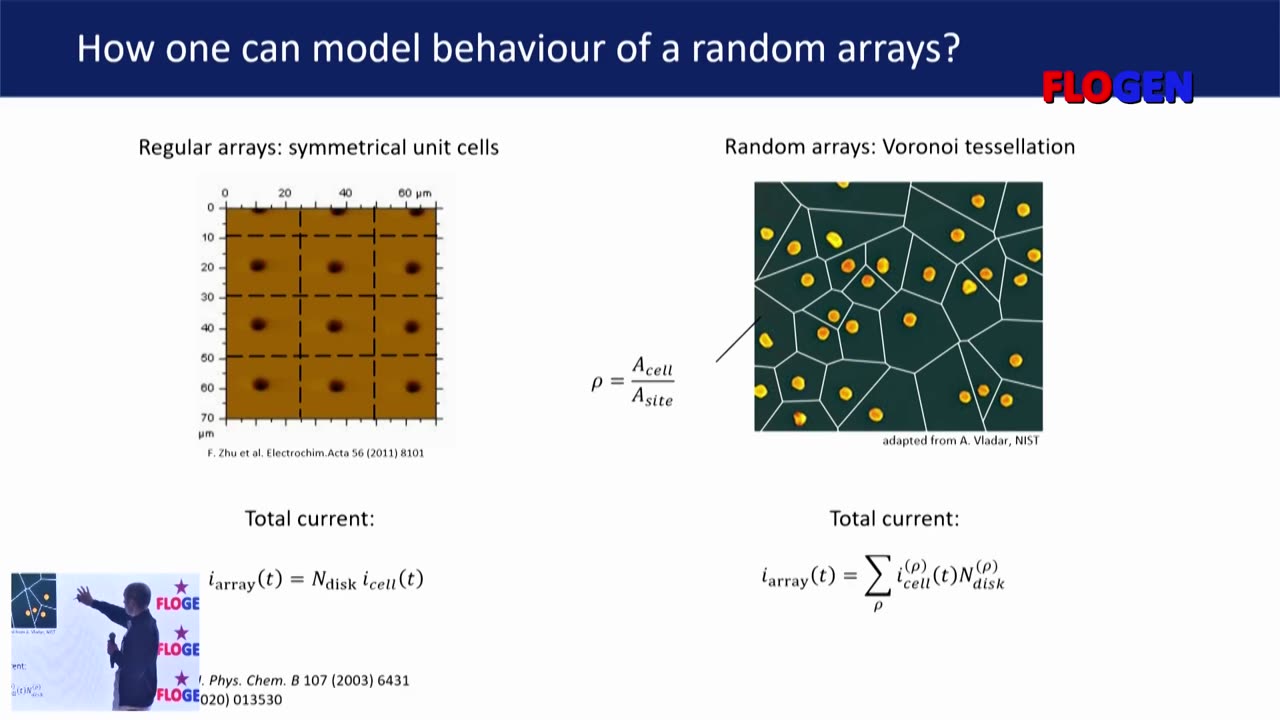Premium Only Content

Dr. Alexander Oleinick #2 @ FLOGEN SIPS 2022 Yoshikawa Intl. Symposium on Oxidative Stress
FLOGEN SIPS 2022: Yoshikawa International Symposium on Oxidative Stress for Sustainable Development of Human Beings (2nd international Symposium)
Presenter:
Dr. Alexander Oleinick, CNRS, Paris, France
Title:
Modelling detection of key biomolecules with enzymatic electrodes: Diffusion towards randomly distributed active sites
Abstract
Monitoring of key biomolecules and/or oxidative stress at cellular or sub-cellular levels by means of electrochemistry requires electrodes with good selectivity and sensitivity. These both characteristics often achieved by employing enzymatic electrodes. At these electrodes the enzymes are generally dispersed within a polymer layer covering electrode surface, where product(s) of the enzymatic conversion are detected. Rationalization of the experimental data imply understanding mass transport towards an enzymatic electrode which is a complicated process due to random distribution of the enzymes along the electrode surface. This process can be considered through the framework of random arrays, that is a set of active sites distributed randomly, which is also useful for description of many practical micro- and nanoscale systems [1]. As shown previously these systems can be efficiently addressed theoretically by using Voronoi diagrams [1, 2] which allows facile tessellation of the system into the unit cells around each active sites. The overall current flowing in the system can then be evaluated by modelling diffusion-reaction processes inside every unit cell and summing the contributions from individual active sites. Although this approach is tempting by its simplicity and efficiency [1] one should bear in mind that Voronoi diagram representing the unit cells by polygonal prisms remains approximation and as each approximation remains valid only under certain conditions. We have shown [3] that even for the case of diffusion limited electron transfer (ET) the actual shapes of the unit cells are more complicated and depend on the local configuration of the neighbouring active sites. This was exemplified on the small patches of the random arrays with band-like and disk-like active sites via simulations and analytical derivations. Importantly, by comparing the total and individual electrode currents obtained by employing Voronoi tessellation and simulation of the system without any approximations we found that the former are reproduced with a good accuracy while the latter are evaluated with a much larger relative error [3], thus demonstrating the limits of Voronoi tessellation for representation of such systems. Moreover, diffusion interaction between the neighbouring sites compensate the differences in unit cell sizes leading to a more uniform unit cell sizes then predicted by Voronoi tessellation [4]. This, in particular explains why the early theory of random arrays using uniform representation of the system were quantitatively successful [5].
References:
[1] O. Sliusarenko, A. Oleinick, I. Svir, C. Amatore. J. Electrochem. Soc. 167, 2020, 013530.
[2] T. J. Davies and R. G. Compton. J. Electroanal. Chem. 585, 2005, 63.
[3] G. Pireddu, I. Svir, C. Amatore, A. Oleinick, ChemElectroChem 8, 2021, 2413.
[4] G. Pireddu, I. Svir, C. Amatore, A. Oleinick, Electrochim. Acta 365, 2021, 137338.
[5] C. Amatore, J.-M. Savéant, D. Tessier, J. Electroanal. Chem. 147, 1983, 39.
-
 1:25:53
1:25:53
Kim Iversen
3 days agoStriking Back: Taking on the ADL’s Anti-Free Speech Agenda
94.4K68 -
 49:35
49:35
Donald Trump Jr.
16 hours agoA New Golden Age: Countdown to Inauguration Day | TRIGGERED Ep.202
176K194 -
 1:14:34
1:14:34
Michael Franzese
15 hours agoWhat's Behind Biden's Shocking Death Row Pardons?
79.3K49 -
 9:49
9:49
Tundra Tactical
14 hours ago $23.12 earnedThe Best Tundra Clips from 2024 Part 1.
126K11 -
 1:05:19
1:05:19
Sarah Westall
14 hours agoDying to Be Thin: Ozempic & Obesity, Shedding Massive Weight Safely Using GLP-1 Receptors, Dr. Kazer
110K26 -
 54:38
54:38
LFA TV
1 day agoThe Resistance Is Gone | Trumpet Daily 12.26.24 7PM EST
75K12 -
 58:14
58:14
theDaily302
23 hours agoThe Daily 302- Tim Ballard
71K13 -
 13:22
13:22
Stephen Gardner
16 hours ago🔥You'll NEVER Believe what Trump wants NOW!!
119K347 -
 54:56
54:56
Digital Social Hour
1 day ago $12.53 earnedDOGE, Deep State, Drones & Charlie Kirk | Donald Trump Jr.
67.9K6 -
 DVR
DVR
The Trish Regan Show
18 hours agoTrump‘s FCC Targets Disney CEO Bob Iger Over ABC News Alleged Misconduct
71.6K44